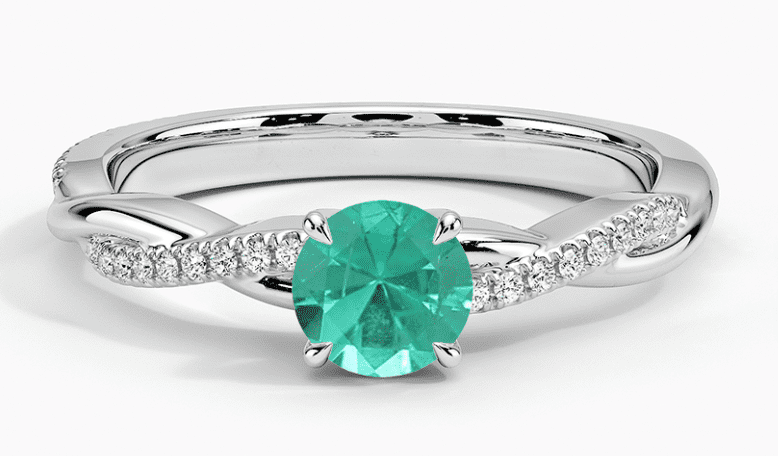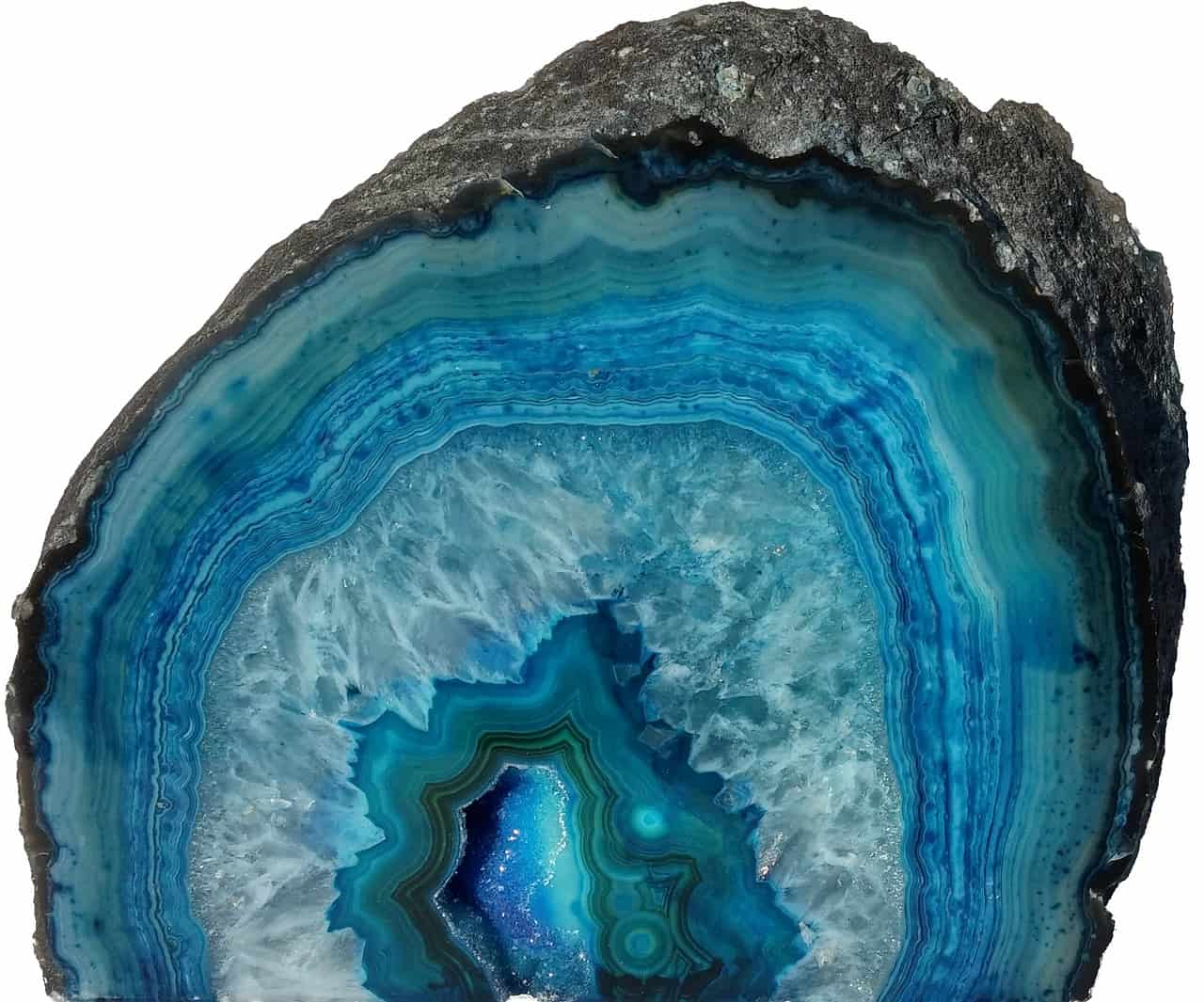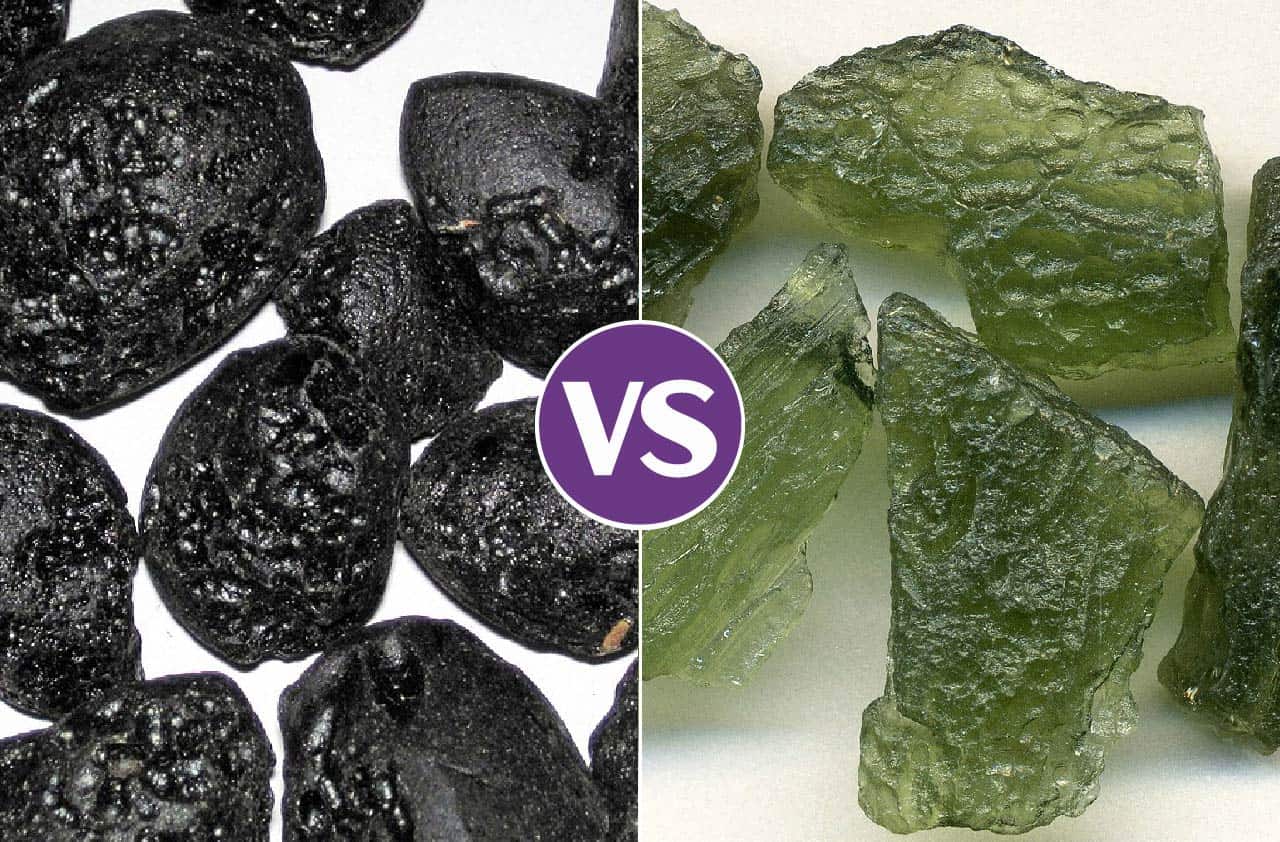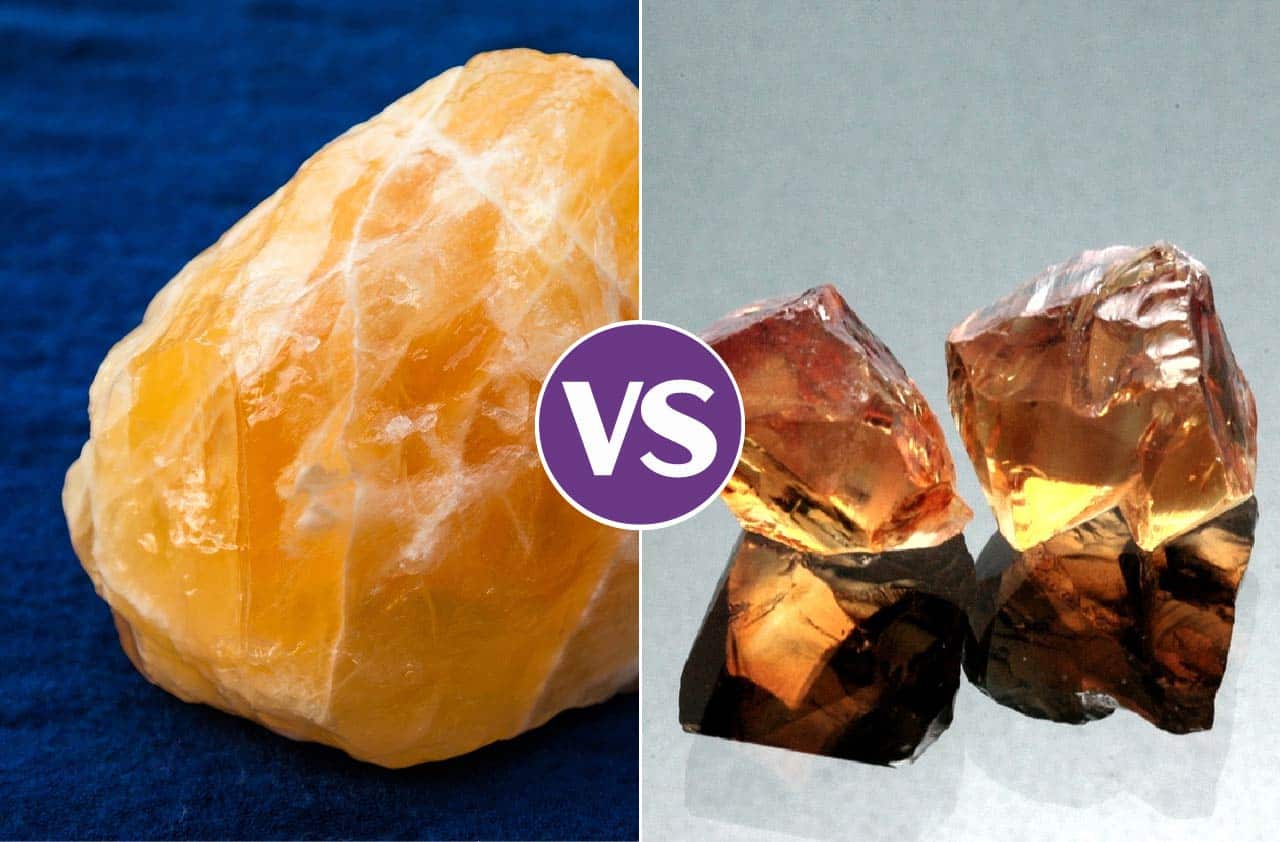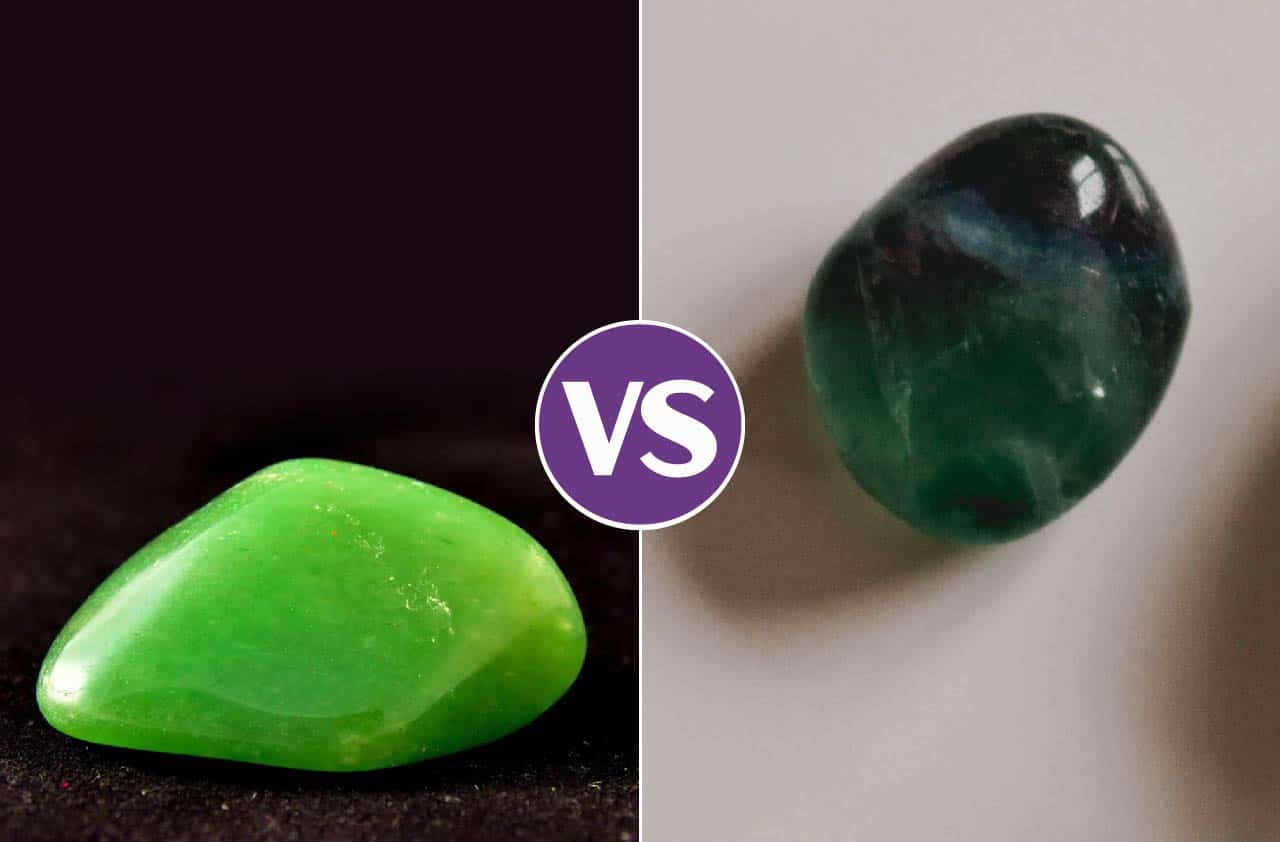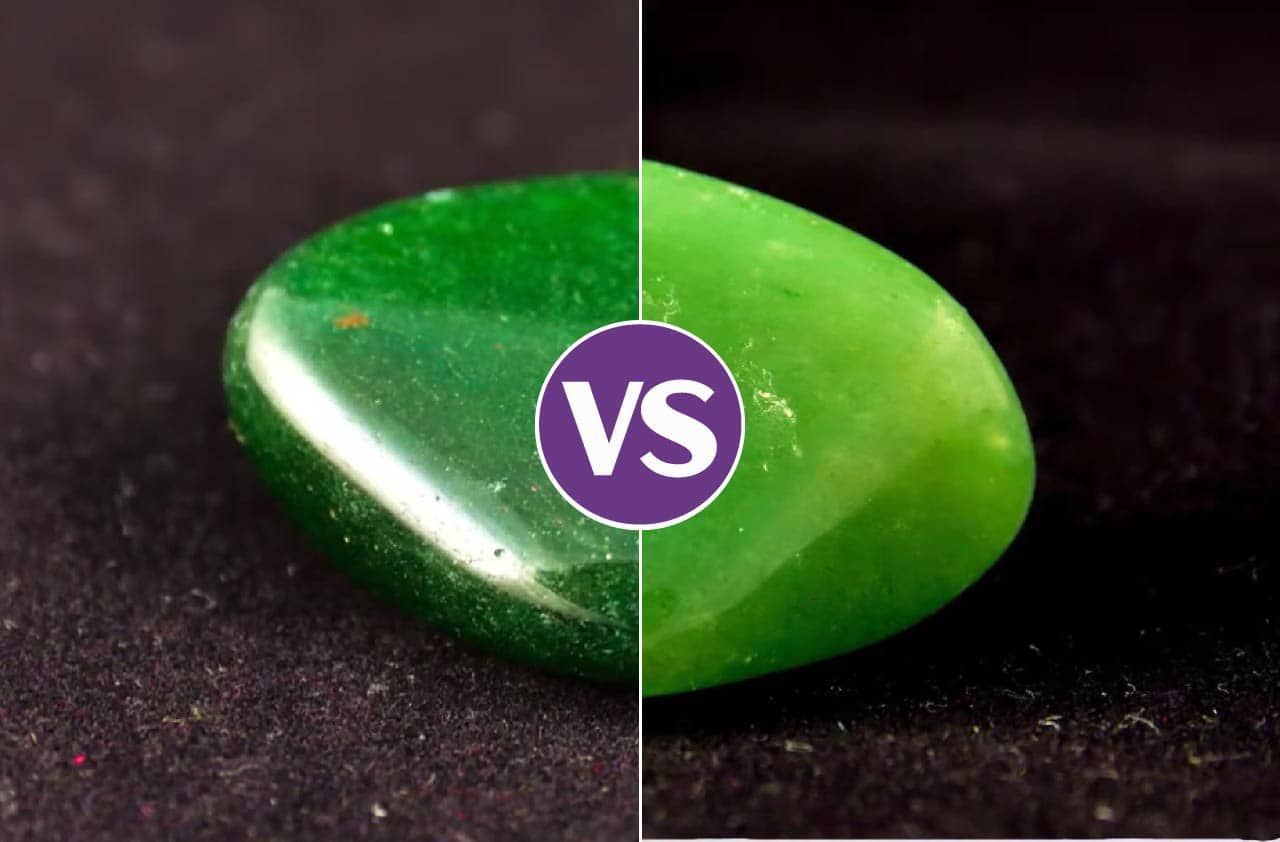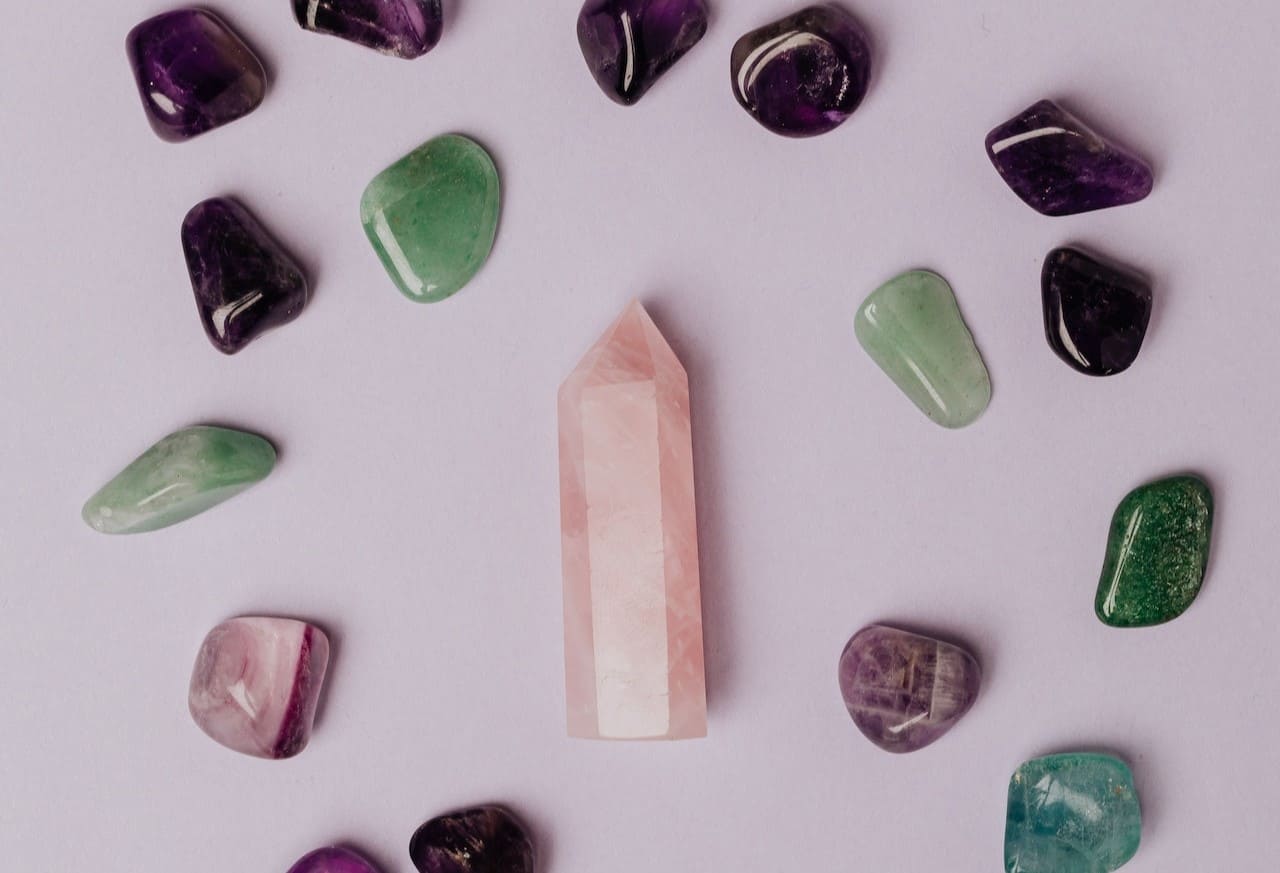Stuck between choosing an emerald or a green sapphire? Maybe you just want to learn about their similarities and differences.
You're in the right place. In this Learning Guide, we'll answer the following questions about emeralds and green sapphires:
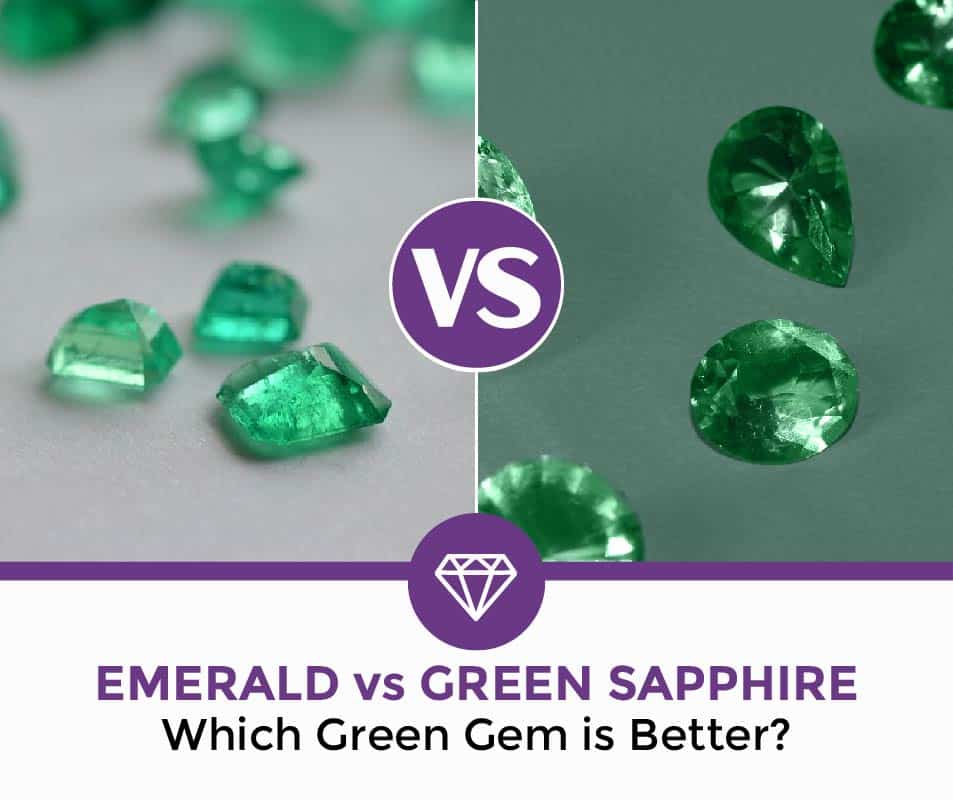
- Can you wear emeralds everyday?
- Are green sapphires expensive?
- Where are emeralds mined?
Main Differences between Emeralds vs Green Sapphire
- Green sapphire is a relatively unknown sapphire color, whereas emeralds are very famous and in demand.
- Assessing the quality of green sapphire is very straightforward, whereas analyzing an emerald is a lot different.
- Untreated green sapphires are more common, whereas untreated emeralds are very rare.
- Green sapphires should have high clarity, whereas emerald clarity isn't as important for its quality.
Origins
Emerald and green sapphire engagement rings are both green, but there's a lot of difference between the two gemstones.
Emerald
Emeralds are known as the May birthstone and are one of the four precious gemstones in the jewelry industry. Only emeralds, rubies, sapphires, and diamonds are considered precious gemstones. All others are semi-precious.
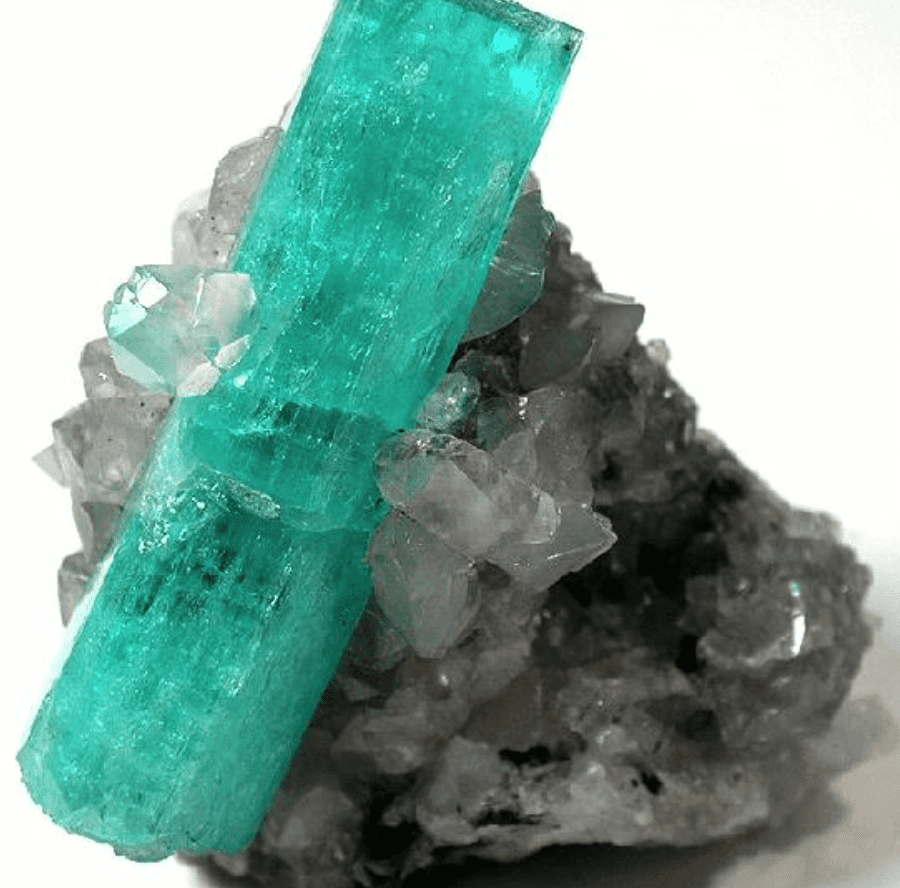
Gem-Quality Rough Emerald credited Robert M. Lavinsky
Emeralds are the vivid green variety of the mineral beryl. Beryl is also the same mineral responsible for aquamarine and morganite jewelry pieces. These green gemstones are found in various places around the world, but there are some sources more known than others.
Read also: Best Place to Buy Morganite Rings Online
The world's first emeralds came out of Egyptian mines. At this time, emeralds didn't have the translucency or transparency we're able to obtain today. The material was often opaque, but was sold as beads, decorative sculptures, or cabochons.
Today, few emeralds are still mined from Egypt. Once the Colombian emerald mines were discovered, it was game over for Egypt. The most notable emerald deposits are found in:
- Colombia
- Afghanistan
- Brazil
- Zambia
- Ethiopia
Green Sapphire
Chances are, you've heard of blue sapphire. You may have even heard of pink sapphires and white sapphires too. Sapphires actually occur in a rainbow of different colors, but these three are the most common sapphires seen in jewelry stores.
Green sapphire isn't very common to see compared to other sapphire colors. Like all sapphires, green sapphires come from the mineral corundum. All sapphire colors come from the corundum family, including red. However they are not called "red sapphires". You may know red corundum as the July birthstone, ruby.
Read also: Best Place to Buy Ruby Jewelry
Blue sapphires can be found all around the world, but green sapphires are found in certain places. Green sapphires with different hues can be found in:
- United States (Montana)
- Sri Lanka
- Tanzania
- Australia
Appearance
Both green sapphires and emeralds are capable of producing pure green hues, but majority of the time there are additional secondary colors present. Let's discover the features in appearance that differ between these two gorgeous green gems.
Emeralds
You would not believe how many opaque looking natural emeralds I've seen Kay's overcharge customers solely based on the fact that it's natural? A lot.
Opaque natural emeralds (emerald stones you can't see through) are low quality gemstones. They are not desirable in the jewelry industry, but places like Kay's won't tell you that. Fine quality emeralds are transparent, but translucent emeralds can go for higher prices too.
Emeralds are also valued on their hues and intensity. The best emeralds are a medium to dark tone of green. The green hue of emeralds come from chromium and/or vanadium impurities entering colorless beryl beneath the earth.
Pure green emeralds are few and far between. Most emeralds have secondary hues of blue or yellow. Colombian emeralds have greenish blue hues while emeralds from the Panjshir mines in Afghanistan produce yellowish green secondary hues.
Synthetics and Imitations
Though emeralds are green colored varieties of beryl, they aren't the same thing as green beryl. Many dishonest sellers in marketplace often sell green beryl under the guise of "light green emeralds".
Which isn't true. Green beryl obtains its light green tone from iron present in colorless beryl. Remember, emeralds get their shades from chromium and vanadium. But new emerald buyers don't know that and are swept up by a deal on an "emerald".
Aside from green beryl, there are other green gems and materials that could be used to dupe an unsuspecting emerald buyer. Emeralds are some of the most sought-after stones in the world, which means there are many fakes and imitations sold in smaller markets than your typical retail jewelry store.
Read also: How to Tell If an Emerald is Real
Green garnets, green sapphires, epidote, and other similar colored stones can simulate emeralds. However, the most common emerald simulants are going to be faceted green glass or green cubic zirconia.

Green Glass, the most common emerald imitation material credited Jennie Ivins
You might not find other green gem materials masquerading as real emeralds in chain jewelry retailers, but you will run into lots of synthetic emeralds. Synthetic emeralds are real emeralds that have been created in a controlled environment instead of forming within the ground.

Natural Emerald

Lab Grown Emerald
They have all the same qualities and properties as natural emeralds. The price and value of lab created emeralds are much different, but we'll talk about that later.
Emeralds are one of the few gemstones that have a variety of gemstone treatments done to improve their color and clarity. Though some emerald treatments are normal and acceptable, they bring down both value and price some. Other treatments may bring down the price and value much further. But more on that later too.
You should never buy an untreated emerald without a gemstone certificate from a legitimate gemstone laboratory stating the green stone is untreated. High quality untreated emeralds are extremely rare. Gemstone treatments are virtually undetectable by most jewelry associates and consumers alike.
Green Sapphires
The green variety of the corundum mineral family can come in a variety of green hues too. Unlike emeralds, light green and bright color green sapphire engagement rings are the most valuable. A deep green sapphire ring is beautiful, but not the most desired.
Like emeralds, green sapphires can have secondary hues. One of the biggest trends in sapphire jewelry is teal sapphire. These sapphires have bright bluish green hues and are frequently found in Montana. In addition to blue green shades, a green sapphire can have yellow green hues and even soft seafoam green hues like green beryl.
Though they may not be well-known, green sapphires have a brilliance that you won't find in emerald. The white light combined with the beautiful green color sapphire is truly a sight to behold. And very few own them.
Synthetics and Imitations
The demand for a green natural sapphire isn't as high as it is for a natural emerald. Most people looking for a sapphire are looking for a pure velvety blue stone instead of various fancy sapphires.
Read also: Peridot vs Emerald
Emerald vs Green Sapphire Price and Value
Demand
The price comparison between green sapphire vs emerald is very different. Though gem-quality green sapphires are rare gemstones, there isn't a high demand for them. Many people don't know this color sapphire exists. As a result, the price per carat weight isn't very expensive.
Emerald rings and fine jewelry are high in demand. Diamonds, emeralds, sapphires, and fine quality ruby are all highly desired gemstones for an engagement ring or jewelry piece. The demand drives up the cost. The highest quality green sapphire price will still cost much less than the highest quality emerald stones.
Green Sapphire Price Per Carat
The price per carat weight of a gemstone is determined by its quality. Some colored stones prioritize clarity or color, like in the case of green sapphire. Higher quality green sapphires should have high clarity, meaning no eye visible inclusions should be present. If the stone is not eye-clean, it brings down value and price
Untreated natural green sapphire prices can range between $100 per carat to around $1500 per carat. As the carat weight of a green sapphire engagement ring increases, so does the price. This unheated 3 carat sapphire with yellow green hues from The Natural Sapphire Company runs around $4300.
Emerald Price Per Carat
The standards of a fine quality emerald are a lot different. There's a lot that goes into analyzing the quality of a natural emerald which contributes to how much it costs per carat.
Unlike sapphires, natural emeralds aren't considered low quality for highly noticeable inclusions. Emeralds free of natural inclusions are rare and cost much more.
Transparency and color are the biggest factors in emerald price. Then it's carat weight and clarity.
Emerald clarity has actually been an aesthetic of the the gemstone, referred to as the "jardin" The inclusions found in emeralds almost look like vines throughout the transparent stone, living up to its name which is French for "garden". This is why clarity isn't a huge factor regarding price of an emerald engagement ring.
The price range of a 1 carat emerald can vary based on its quality. Many one carat natural emeralds can be found as low as $400 per carat. However, it's likely these stones are more translucent than transparent, like these emeralds from James Allen below:
Emeralds are subjected to a lot of treatments that can enhance color and clarity. One of the most common emerald treatments is oiling. Oiling improves color, but isn't permanent. They have to be re-oiled by a jeweler. So, it's important to only buy natural emeralds with certificates that can tell you if its been treated or not. You wouldn't want to find out that your heavily oiled emerald loses its color after purchasing it!
Untreated emeralds are much more expensive, especially if they are top color. This .95 carat emerald has been subjected to heat treatment, but has never been oiled. It still costs around $12,000.
This eye-clean 2.68 carat Asscher emerald from the Natural Emerald Company runs around $22,000. It has been treated with standard mild clarity enhancements.

2.68 carat Asscher Emerald
Value
When we talk about diamond and gemstone value, it's not just about how much you can resell it for. Gemstones aren't the best investment unless you have high quality stones with a rich color, like a finest quality rubies, finest quality sapphires, or emeralds.
Not everyone wants a diamond for their engagement ring. I get that. But if you're looking for a colored gemstone as the center of your engagement ring, you want to make sure the gem is good enough for everyday wear.
Wearability
Green Sapphire
One of the ways gemologists determine this is by using the Mohs scale. The mineral scale of hardness measures the scratch resistance of a mineral. In this case, we're considering how a gem worn everyday stands up to the dust, dirt, and quartz particles in the air.
Your standard ring comes into these particles no matter what your lifestyle is. It's aside from the accidental bumps you may or may not realize you do throughout the day or how well you clean and take care of your jewelry. If you don't clean it properly and your gem is too soft, you might actually scratch it while wiping it.
Read also: Best Jewelry Solution Cleaner
Fortunately, green sapphire engagement rings have a high hardness. Sapphire is considered the best gemstone for wearability. Sapphire hardness reaches a 9 on the Mohs scale, just below a diamond at a 10. But being scratch resistant isn't the only qualification to gemstone wearability. Even so, green sapphires are extremely durable in all areas of wearability.
Emerald Wearability
Emerald engagement rings don't have as good of wearability as green sapphires. They require more care and caution if worn daily. On the Mohs hardness scale, emeralds reach a 7.5-8. If a diamond is 4x harder than a sapphire, one could assume that emerald is 4x less hard than a sapphire at a hardness of 8.
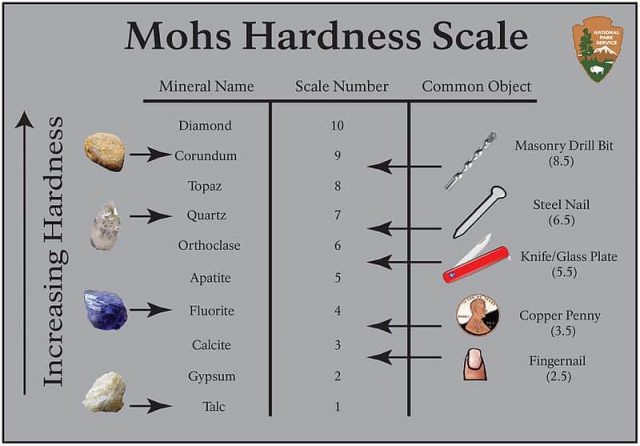
Image by the National Park Service. Public Domain.
Not to mention the presence of inclusions in most emerald stones leaving a vulnerability to chipping if struck accidentally. Additionally, many treatments done to emeralds can't be exposed to high heat or intense light. Wearing your emerald engagement ring outside in the summer probably isn't the best idea.
Read also: Emerald vs Jade
That's not to say that emeralds can't be worn daily, but they require more care and consideration than green sapphire.
Conclusion
Both emerald and green sapphires are beautiful green gems worthy of adding to your jewelry collection. Aside from being the same color, there are very different standards of quality considered for each of these stones. Emeralds have one desirable primary hue, a medium tone deep green color. A green sapphire's color is desirable in many hues and tones.
I hope you've found this comparison guide to be helpful when trying to compare green sapphire vs emeralds.





